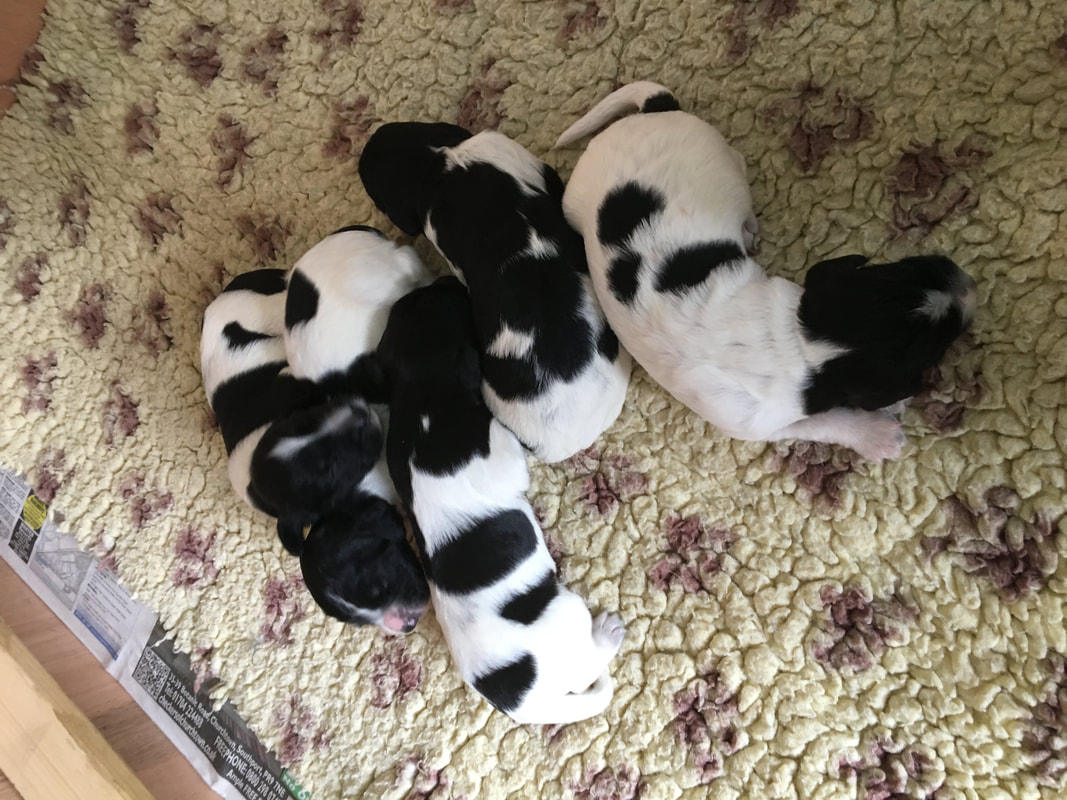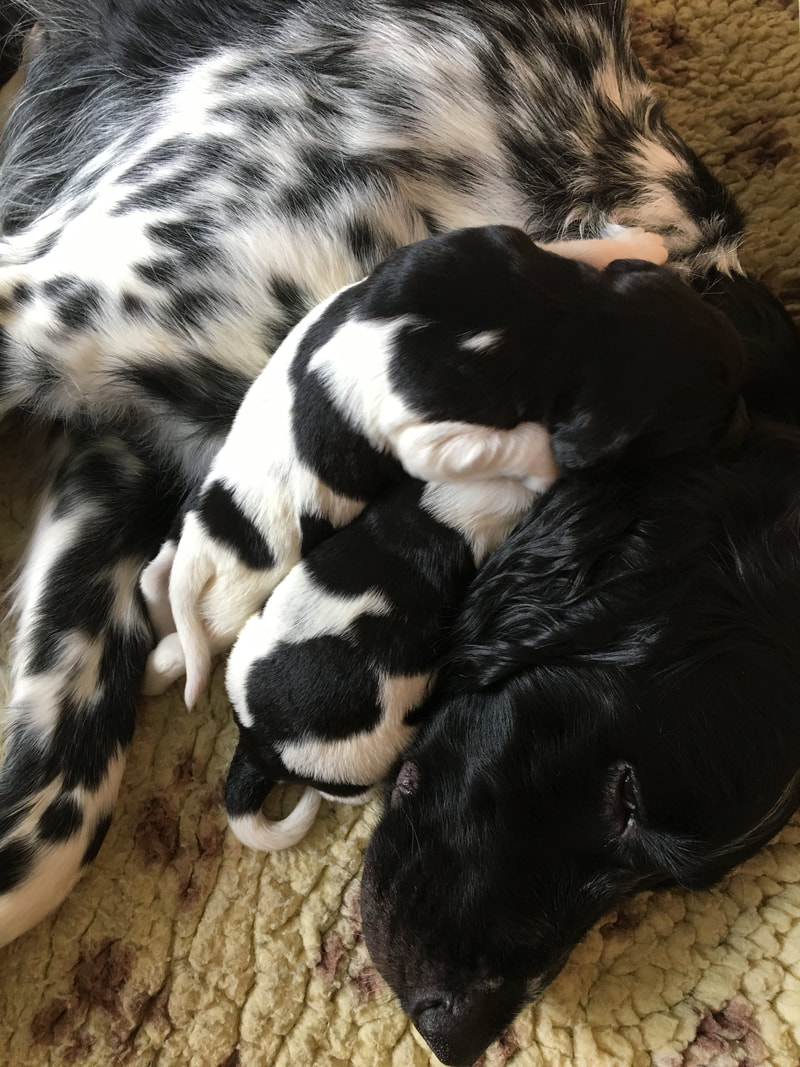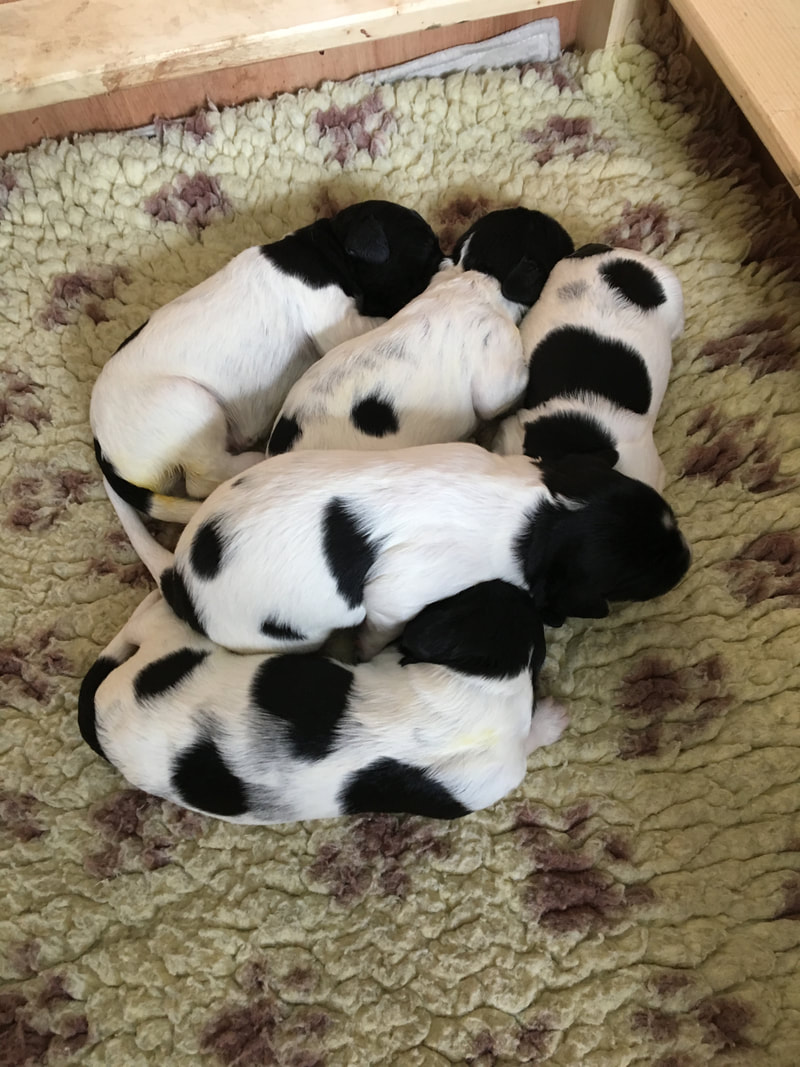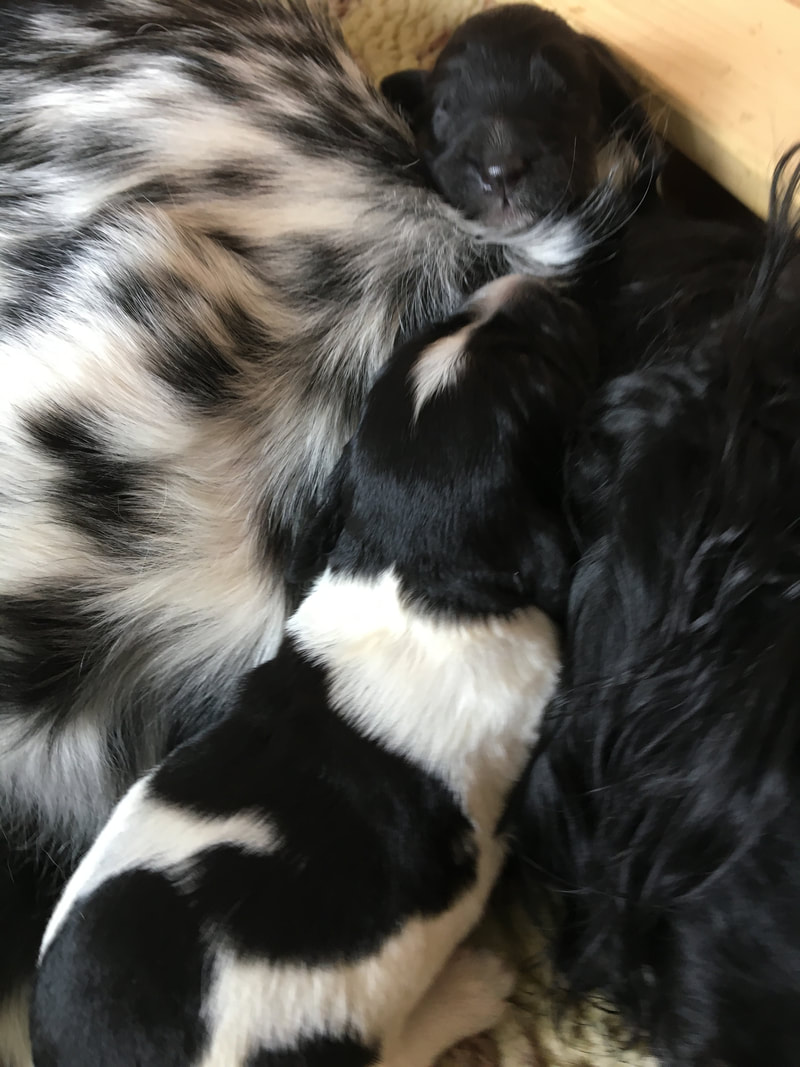A week… a whole seven days… at the moment time seems to be moving both quickly and slowly. Dora’s babies are a week old: their eyes are beginning to open, tiny slits appearing at the corners. They have almost doubled their birth weights, they are trying to stand: I watched one this afternoon, pull himself up, put his hind legs underneath his body, stand… wobble… and fall over! This time last week they were new, so new, less than a few hours old. Their first instinct was to get to their Mother’s teat, to food, to nourishment. Watching them, still wet from the birth, crawling with such determination, I was struck by the desire to live, to thrive.
Given that they can neither see, nor hear, nor walk, they are remarkably speedy and determined as they move across the whelping box. Watching them a couple of days after they were born my daughter likened them to zombies—puppy zombies driven by the smell of milk, an army of undead homing in on their mother, driven forward by instinct, the desire for survival. There are 10 pups and 7 teats: not quite enough to go around: first there, first served. Those who make it to a teat hang on for grim death, as if their very survival depended upon it, which, I guess, it does. As a zooarchaeologist and scientist this fascinates me—this survival of the fittest, their biological urges and desires. I watch them and wonder how many, and which ones, would have survived in the wild. Here, in the comfort of the book room, they are monitored and those that seem in need are given priority access to Dora. The pig rail, in the carefully constructed whelping box, stops them being squashed by a tired, slightly overwhelmed, first-time mother.
I once found a cluster of neonatal canid bones, several puppies buried together in the corner of a cave. These bones supposedly came from a time before domesticated dogs. Archaeological data indicated that hunter-gatherers were using the cave on a seasonal basis—were these bones evidence of very early interactions between wolves and humans, or had this ‘burial’ occurred while the humans were absent and the cave was being used as a whelping den? Research into wolf behaviour revealed that wolves bury their dead pups. We will probably never know if this cluster of neonates was the result of natural animal behaviour or human intervention. Watching Dora and her newborns I am reminded of the wolf pups, the strength of the maternal bond, the love that comes unbidden, the desire to protect and make safe, even if, as in the case of the wolf pups, that means carefully burying the ones that don’t survive.
Given that they can neither see, nor hear, nor walk, they are remarkably speedy and determined as they move across the whelping box. Watching them a couple of days after they were born my daughter likened them to zombies—puppy zombies driven by the smell of milk, an army of undead homing in on their mother, driven forward by instinct, the desire for survival. There are 10 pups and 7 teats: not quite enough to go around: first there, first served. Those who make it to a teat hang on for grim death, as if their very survival depended upon it, which, I guess, it does. As a zooarchaeologist and scientist this fascinates me—this survival of the fittest, their biological urges and desires. I watch them and wonder how many, and which ones, would have survived in the wild. Here, in the comfort of the book room, they are monitored and those that seem in need are given priority access to Dora. The pig rail, in the carefully constructed whelping box, stops them being squashed by a tired, slightly overwhelmed, first-time mother.
I once found a cluster of neonatal canid bones, several puppies buried together in the corner of a cave. These bones supposedly came from a time before domesticated dogs. Archaeological data indicated that hunter-gatherers were using the cave on a seasonal basis—were these bones evidence of very early interactions between wolves and humans, or had this ‘burial’ occurred while the humans were absent and the cave was being used as a whelping den? Research into wolf behaviour revealed that wolves bury their dead pups. We will probably never know if this cluster of neonates was the result of natural animal behaviour or human intervention. Watching Dora and her newborns I am reminded of the wolf pups, the strength of the maternal bond, the love that comes unbidden, the desire to protect and make safe, even if, as in the case of the wolf pups, that means carefully burying the ones that don’t survive.




 RSS Feed
RSS Feed